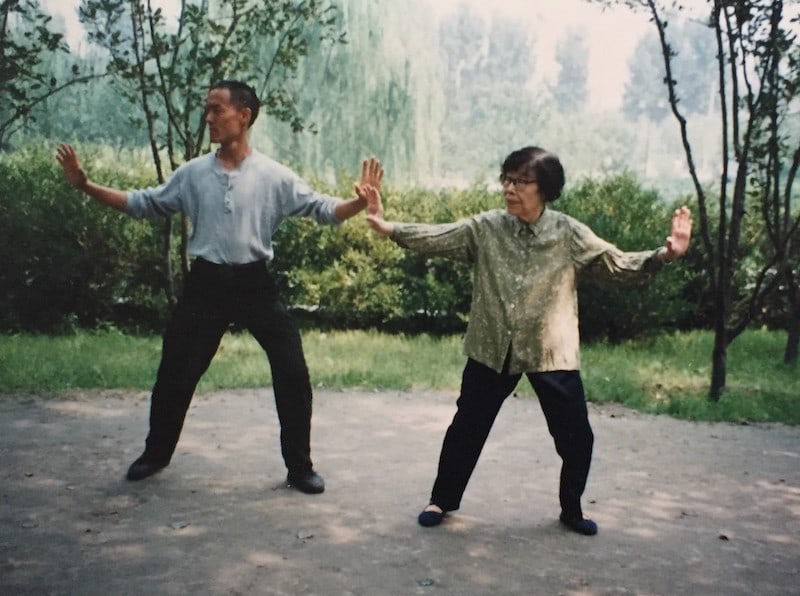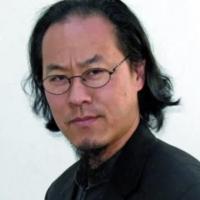I’ve been in the industry of making martial arts instructional videos since the early late 80s and I can’t begin to tell you how many times people have asked me ‘What can you really learn from video?’ And I get it. There’s no comparison to in-person learning. In Buddhism, we say that dharma is passed from ‘warm hand to warm hand’. While there are plenty of Buddhist books and videos of dharma talks, we still hold that human contact as the best. A live teacher can give you feedback that a writing or recording cannot.
But still, to say that you can’t learn from videos is ignorant. It’s throwing the baby out with the bathwater. Sure, an in-person teacher is the best, but after the pandemic, so many of us migrated to Zoom classes and streaming. And the power of these is undeniable.
However, Zoom classes can offer some feedback that DVDs and streaming cannot. And to be absolutely honest here, I seldom train with either of these. That might seem hypocritical from me, since I’ve already stated that I’ve been in the business of making videos for the past thirty plus years. But I have an excuse.
I seldom use video training is because I’ve lived in the San Francisco Bay Area for most of my life. This area is a mecca for the martial arts, especially those from Asia. The Chinese call San Francisco Jiùjīnshān (旧金山) which means ‘old gold mountain.’ The ‘gold’ not only refers to the California gold rush (1848-1855) which brought many Chinese here, but that old myth that American streets were paved with gold. So many Chinese immigrants landed here and are still landing here, all with that American dream of riches, and the Chinese martial arts comes with them. There’s a ridiculous number of talented teachers in my area, so for me personally, learning from videos have fallen to the wayside. Many people don’t have a qualified teacher within a 100 mile radius, so I'm told, and in those situations, an instructional video with step-by-step instructions is priceless.
Nevertheless, I have learned from a few videos. I’ve done it just so I could get the users’ experience to improve my work. Mind you, I don’t do much instructional video production anymore; none with YMAA Publication Center yet, unless you count our Meet the Author interview series. And that is in part what this essay is all about.

L-R: Gene Ching, Chenhan Yang, Junchen Yang, Helen Liang, 2018.
Reconnecting with Old Friends and Sun Tai Chi
Last year, I had the opportunity to interview my old friend, Master Yang Chenhan. It was one of the very first of the Meet the Authors interview series, curated by YMAA’s video wizard David Silver. Master Yang is in Canada, so prior to the pandemic, we crossed paths in-person at tournaments and such. However, I haven’t spoken with him since so it was delightful to reconnect with him.
That interview was connected to Master Yang’s instructional video on Sun Tai Chi, which was part of my practice. Many years ago, I had the privilege of studying Sun Tai Chi directly under Grandmaster Sun Jianyun (1914-2003 孫劍雲), the daughter of the founder of the style, Grandmaster Sun Lutang (1860-1933 孫祿堂). I wouldn’t go so far to say I was her student. But I did take a few private lessons from her starting back in 1995.
My connection to Grandmaster Sun came from my Northern Shaolin tradition. My foundation style is Bak Sil Lum (Cantonese for 北少林), which descends from Grandmaster Ku, Yu-Cheung (1894–1952 顾汝章). Grandmaster Ku was a contemporary of Grandmaster Sun (Lutang) as well as one of Dr. Yang, Jwing-Ming’s masters, Grandmaster Li, Mao-Ching (born 1927 李茂清). They were all connected to the Central Guoshu Institute (中央國術館) in Nanjing, which was established for the propagation of Chinese martial arts. They did a lot of exchanges, which is how Sun Tai Chi ended up as an elective within the Bak Sil Lum tradition.
My Bak Sil Lum master was Grandmaster Lam, Kwong-Wing (1947-2018 林廣榮) but what he taught as ‘Sun Tai Chi’ was clearly Yang. The explanation for this was part of my Bak Sil Lum oral history - Grandmaster Sun developed his own unique style of Tai Chi after he was doing exchanges with Grandmaster Ku, so was Ku learned from Sun was actually Yang Tai Chi.
It wasn’t until Grandmaster Lam’s senior Bak Sil Lum classmate started digging into this mystery that it was rectified. Master Paul Fung-Ngar Tam (born 1935 譚豐雅) traced Sun Tai Chi back to Grandmaster Sun (Jianyun) and brought it to our school. I first learned the traditional form of Sun Tai Chi alongside my Sifu, Grandmaster Lam, from Master Tam in the early 90s.
In 1995, I made my first pilgrimage to Shaolin Temple. Grandmaster Lam asked me to pay respects to Grandmaster Sun Jianyun for him when I passed through Beijing. We had already incorporated Sun Tai Chi within our curriculum, and it was extremely popular. Sun Tai Chi doesn’t adopt any of the long deep stances like in Yang Tai Chi’s ‘snake creeps down (蛇形下势)’ so it’s easier on the leg joints. It was also a very rare style of Tai Chi in America at that time, which made it feel very special. Sun Tai Chi fuses elements of Xingyi and Bagua. That made it even more special.
When I visited Grandmaster Sun, I already knew the form. I was working full-time for Grandmaster Lam as his Head Shaolin instructor, and for our breaks, we recited the Sun Tai Chi form twice. That was every working day. Grandmaster Sun watched me recite the form for her, constantly stopping me to make corrections. That was one of my top favorite lessons ever.
I visited Grandmaster Sun a few more times over the years and was lucky to study some more with her (except for one time when I had a bad case of Mao’s revenge). But I let go of that form when I moved on from that school. I just didn’t feel like it was doing much for me anymore.
How a Meet the Author Interview Brought an Unexpected Video Lesson
In preparation for my interview with Master Yang, as well as to write a review, I watched his Sun Tai Chi streaming video. Master Chen practices a different Sun Tai Chi form than I do. He propounds the Sun Tai Chi 73 form whilst I do the traditional original form. After working on those, I was inspired to bring Sun Tai Chi back into my workout regimen. After all, Grandmaster Sun Jianyun was named as one of the top ten brightest grandmasters of China, and even though I do not consider myself her student after just a few private lessons, it was a special connection and I treasure her teachings. I found footage of Grandmaster Sun reciting the form on YouTube and used that to pull it together for myself. As part of my training, I watched Master Yang’s video again a few times, to see if I could pick up any pointers.
And I did find a great pointer. There was a little footwork method in one of Master Yang’s lessons that I was missing. It was a tiny detail which had escaped me despite training under Tam, Lam, and Sun. I double checked it with Grandmaster Sun’s video, and she does it. She just never made it explicit to me. I probably had too many other more glaring faults for her to critique. It’s a subtle change, but it makes sense given what I know of the form and its creator.
So, there you have it. Not only did I learn something significant from a video, but it was a technique that was overlooked by my three illustrious masters who taught me the art in person. That’s well worth the price of the DVD or the streaming fee. For any earnest practitioner, picking up some small improvement from a video is so valuable. For me, it’s priceless.
The above is an original article by Gene Ching, Staff Writer for YMAA Publication Center.




